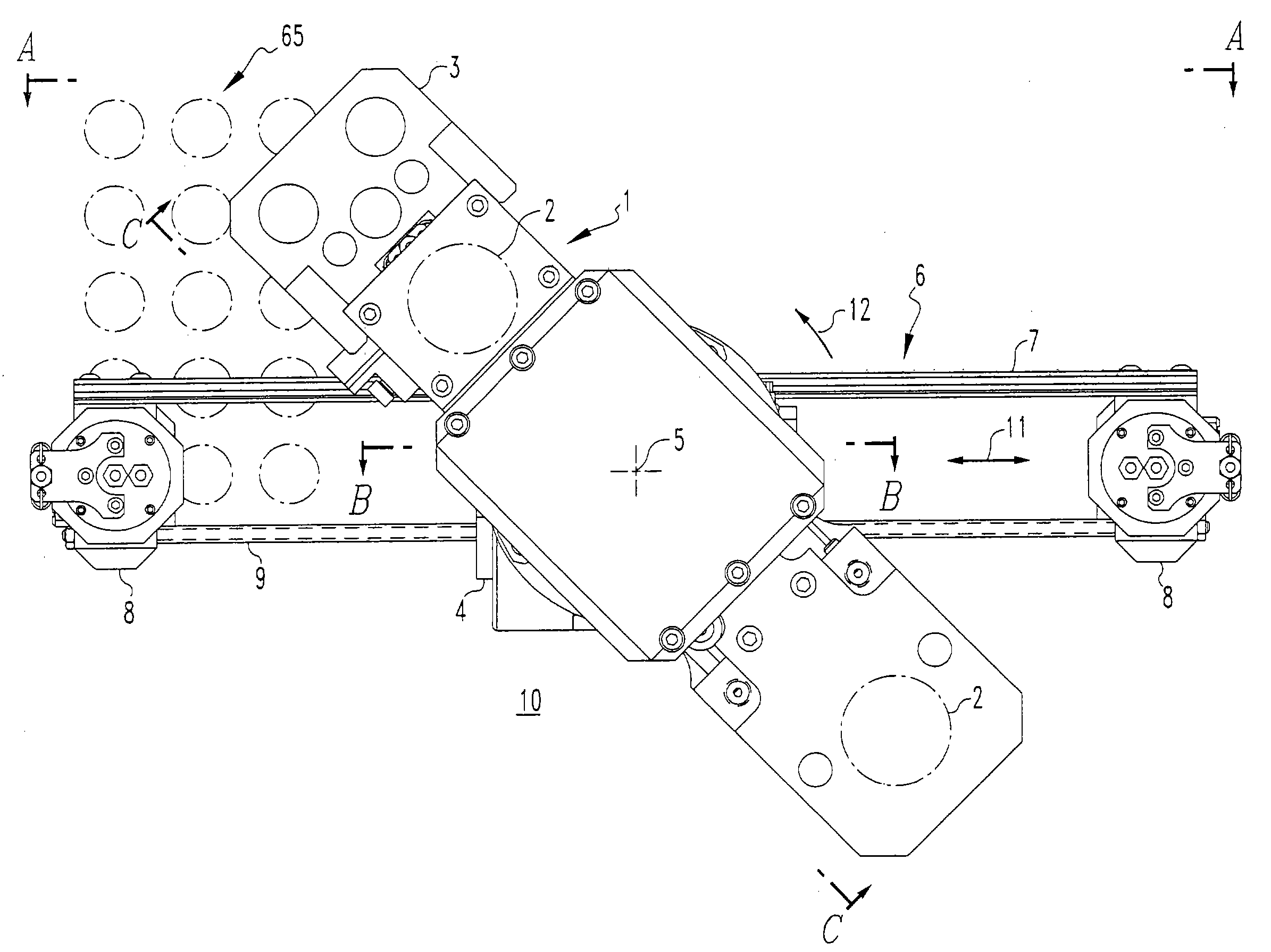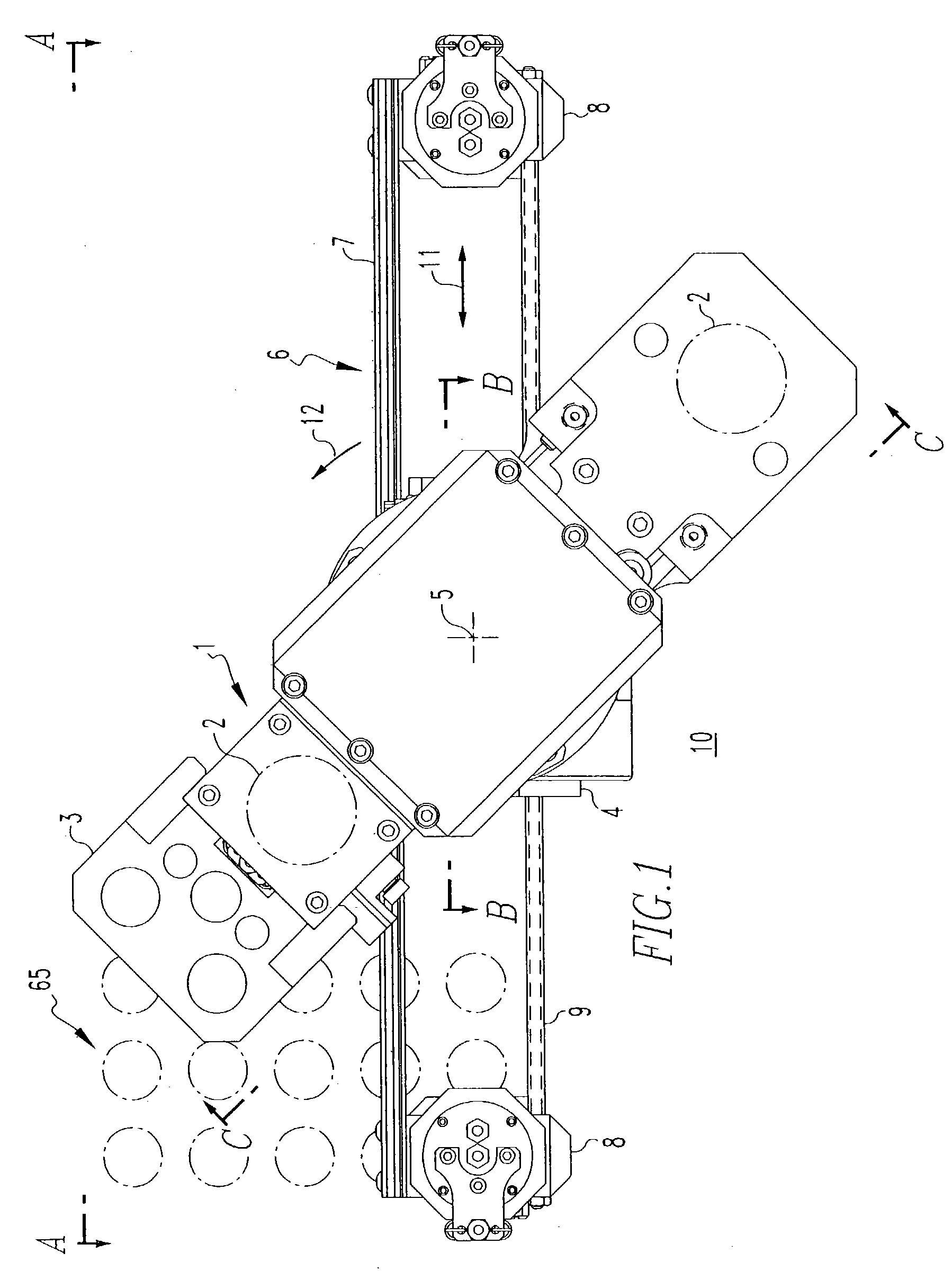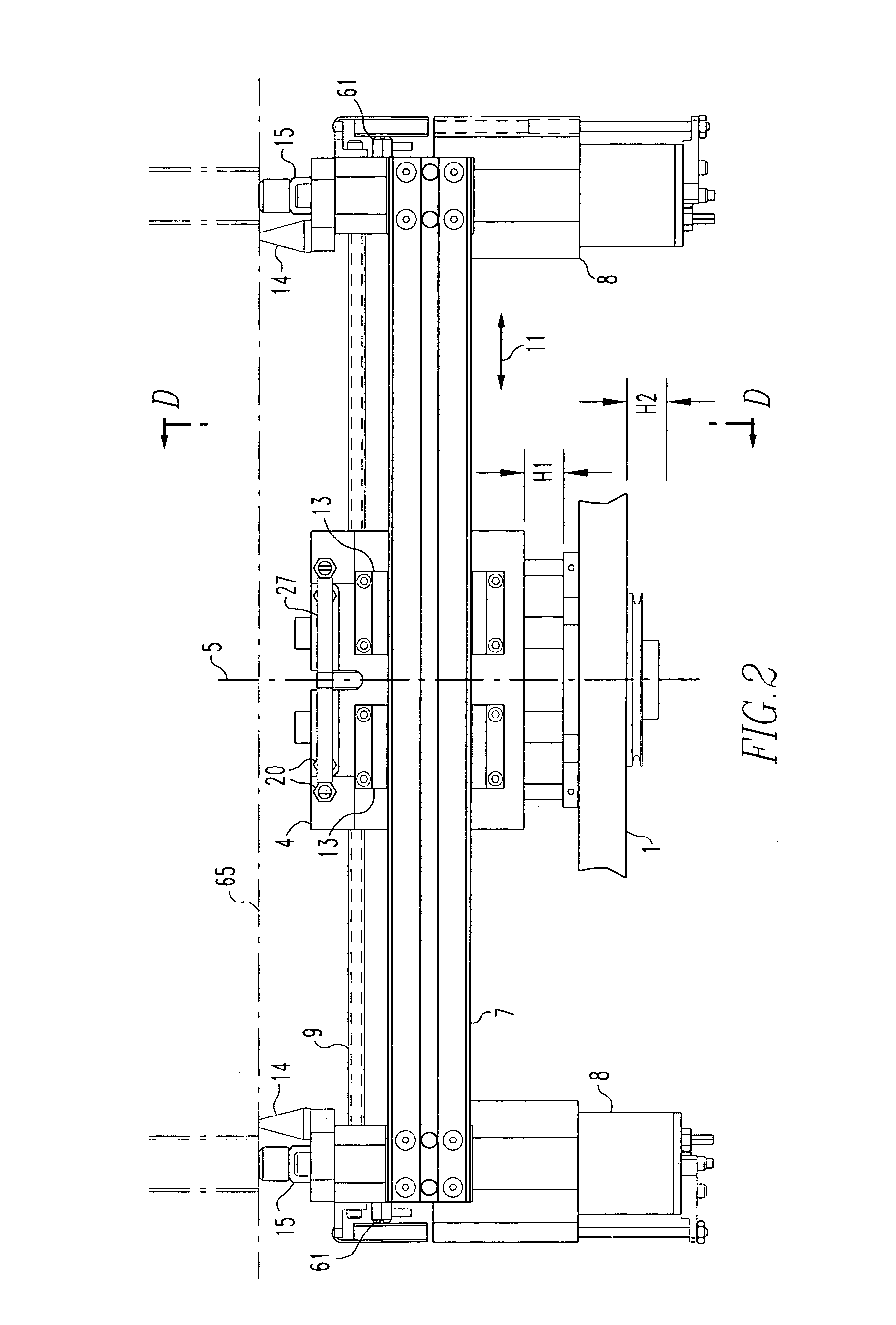Miniature manipulator for servicing the interior of nuclear steam generator tubes
a technology for manipulators and generator tubes, applied in the field of robot systems, can solve the problems of contaminating steam, degrading of some tubes, and generally not being able to replace degraded tubing,
- Summary
- Abstract
- Description
- Claims
- Application Information
AI Technical Summary
Benefits of technology
Problems solved by technology
Method used
Image
Examples
Embodiment Construction
[0028]FIG. 1 shows the manipulator 10 of this invention mounted to a tube sheet 65 of a nuclear steam generator. The invention supports itself using two sets of expandable and translatable grippers 8 and 2 that anchor into the steam generator tube ends. There are three major components that comprise the invention. The first major component, the base member 1, contains a set of grippers 2, solenoids 38 (that will be described hereafter with regard to FIGS. 7 and 9) to operate the manipulator and a rotation mechanism 64 (that will be described hereafter with regard to FIG. 8) and serves as a framework for attachment of cabling and end effectors. A guide block 3 for eddy current inspection is shown attached to the base 1. The end effectors attach to the guide block as will be described hereafter The second major component is the cylinder block 4. The cylinder block contains a linear drive motor and can rotate with respect to the base member 1 about axis 5. As is described in more detai...
PUM
 Login to View More
Login to View More Abstract
Description
Claims
Application Information
 Login to View More
Login to View More - R&D
- Intellectual Property
- Life Sciences
- Materials
- Tech Scout
- Unparalleled Data Quality
- Higher Quality Content
- 60% Fewer Hallucinations
Browse by: Latest US Patents, China's latest patents, Technical Efficacy Thesaurus, Application Domain, Technology Topic, Popular Technical Reports.
© 2025 PatSnap. All rights reserved.Legal|Privacy policy|Modern Slavery Act Transparency Statement|Sitemap|About US| Contact US: help@patsnap.com



